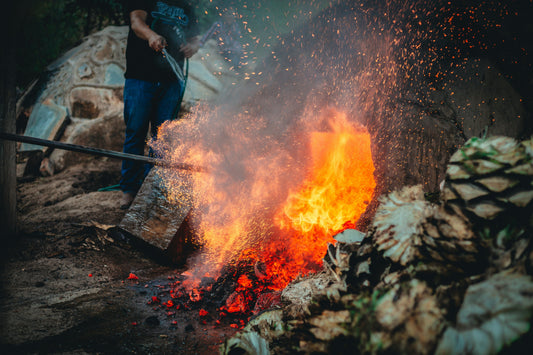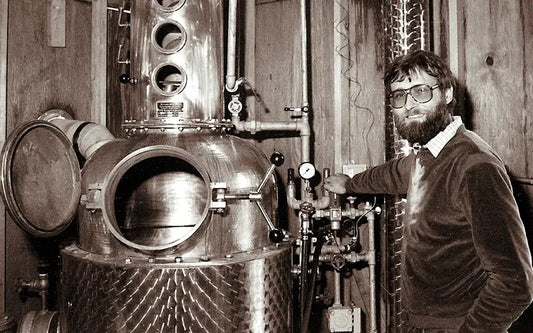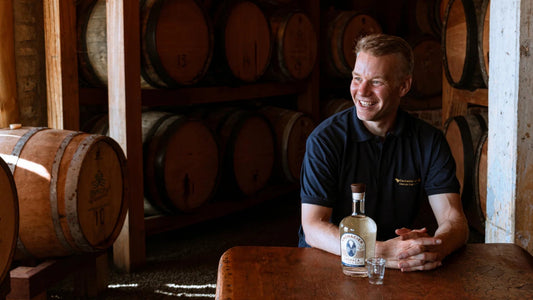Intro: What mezcal really tastes like (and why)
Mezcal isn’t just “smoky tequila.” It’s its own world—wild or cultivated agaves, roasted in earth pits, crushed and slowly fermented, then distilled with real patience. The best bottles taste like place: sun-baked hills, cool nights, wood smoke, and the particular hands that made them. That’s why it can be bright and citrusy one moment and deep, earthy, and savory the next. If you’re new to the category, you’re in for a ride; if you’ve been around the agave block, you know the joy is in the nuance.
“Great mezcal doesn’t shout; it smolders—letting agave, earth, and time do the talking.”

How mezcal is made (the nutshell version)
Here’s the simplified flow, so your first sip has context:
- Agave selection: Producers work with different species (espadín is common, but you’ll see barril, cuishe, tepeztate, inaequidens, salmiana, and more). Species = flavor.
- Roast: Hearts (“piñas”) go into a stone-lined earthen pit with hot rocks, covered and slow-roasted for days. This roast caramelizes sugars and introduces that gentle smoke.
- Crush: Traditionally a stone tahona pulled by mule or motor, or a mechanical mill. Crushing exposes fermentable juice and fibers.
- Fermentation: Ambient yeast, wooden vats (or sometimes stone/clay/food-grade plastic), often with fibers in the wash. No lab yeast bombs—just time, temperature, and microbes.
- Distillation: Usually copper pot stills; in some regions, clay pots (olla de barro) give an earthy, textural signature.
- Proof & bottling: Minimal intervention. Many mezcals are bottled “en boca de olla” or adjusted with the heads/tails technique called “abocado con puntas/colas” to land at a natural-feeling proof.
Every step nudges the flavor: species, altitude, roast time, still type, fermentation style. That’s the joy—no two honest mezcals drink exactly alike.

Why we carry these four
We like portfolios that teach in the glass—producers you can taste side by side and actually learn something. Banhez, Derrumbes, 5 Sentidos, and Vago Elote each spotlight a different angle: community, region, single-producer eccentricity, and a genre-bending corn-inflected twist. Together, they cover a lot of mezcal ground without losing the soul of the category.
The lineup: brands to know, flavors to expect
Banhez (Oaxaca; community-made, welcoming style)
Banhez is produced by a cooperative of family mezcaleros. Expect balance: gentle smoke, clean sweetness, and ripe-agave core. If you want your first “aha!” pour, Banhez is friendly without being boring.
What it tastes like: roasted agave, citrus peel, soft smoke, touch of green herbs.
How to drink it: neat in a copita to catch the aromatics; also stellar in Palomas, Naked & Famous riffs, and mezcal Margaritas (where smoke accents, not overwhelms).
Why it’s on our shelf: approachability plus real provenance. It’s the “teach me mezcal” bottle we can recommend without caveats.
Derrumbes (regional snapshots; one label, many terroirs)
Derrumbes runs a regional series—different states, species, and still types—so you can taste how mezcal shifts across Mexico.
- Derrumbes Oaxaca: often espadín-led, roasted depth with citrus and cocoa.
- Derrumbes Michoacán: typically inaequidens (“alto”) agave, sometimes with Filipino-style stills; think orchard fruit, wet stone, whisper of smoke.
- Derrumbes San Luis Potosí: salmiana-driven; grassy, minty lift and peppery edges, lighter smoke impression.
Why it’s on our shelf: it’s a tasting flight in one brand. Pick two regions, pour side by side, and you’ll instantly understand how species and method shape flavor.
5 Sentidos (single-producer, small-batch curiosities)
5 Sentidos bottles micro-parcels and single-producer runs—sometimes clay-pot distillations, sometimes wild agaves, sometimes fascinating production quirks. The batches vary (that’s the point), but the common thread is character and transparency.
What it tastes like: depends on the bottling—expect intensity, layered aromatics, and textures from the still type (clay vs copper).
How to drink it: neat, slow, and curious. These are conversation pours; let them warm, sniff often, sip small.
Why it’s on our shelf: when you want to show a friend that mezcal can be as varied as wine, 5 Sentidos is your proof.
Vago Elote (Oaxaca; the corn-kissed signature)
Vago’s “Elote” is a beautiful twist: the mezcalero infuses toasted corn during part of the process (a traditional technique in the region) and redistills, folding soft, sweet cereal notes into the roasted-agave core.
What it tastes like: roasted agave, vanilla-corn hush, warm spice, gentle smoke. Think campfire near a cornfield—cozy but still distinctly mezcal.
How to drink it: neat or on a big cube; in cocktails it lends a soft sweetness that can replace syrup.
Why it’s on our shelf: it’s an instant bridge for bourbon drinkers and an eye-opener for agave fans who think they’ve “tasted it all.”

Choosing your first bottle (and your second)
- New to mezcal? Start with Banhez for balance. It plays nicely in cocktails and teaches the category’s core notes.
- Curious about terroir? Grab two different Derrumbes regions and compare.
- Want intensity and craft weirdness (in the best way)? Pick a 5 Sentidos single-producer parcel—clay still if you can find it, for texture and earth.
- Comfort-seekers and bourbon fans: Vago Elote threads that roasted-agave line with a gentle, toasty sweetness.
How to taste (quick, useful, no rules broken)
- Use a copita or a rocks glass. Small sips.
- Let it breathe. A few minutes open often transforms the nose.
- No lime/salt training wheels. Save those for tequila shots you don’t want to taste. Mezcal deserves your senses unmasked.
- Add a drop of water if the proof feels tight; it can open floral and fruit notes.
Mezcal in cocktails (keep it simple)
Mezcal shines when you respect the base. Citrus, bitters, ginger, and light sweetness go a long way. A half-ounce split with tequila or whiskey can add dimension without smoke overload. And yes, a stirred mezcal + sherry + bitters combo can be magic.

One easy cocktail: Mezcal Paloma (House Build)
Bright, refreshing, and still very mezcal.
You’ll need
- 1½ oz mezcal (Banhez for balance, or Vago Elote for a softer glow)
- ¾ oz fresh grapefruit juice
- ½ oz fresh lime juice
- ½ oz agave syrup (1:1)
- Pinch of flaky salt
- Cold soda water to top
- Grapefruit peel
Build it
- Shake mezcal, citrus, syrup, and a pinch of salt with ice.
- Strain into a tall glass over fresh ice.
- Top with cold soda water.
- Express a wide grapefruit peel over the top; drop it in.
Why it works
Grapefruit and lime keep mezcal lifted; a tiny bit of sweetness and salt round edges without hiding the agave. Swap in a splash of Aperol (¼ oz) if you want a bitter-citrus pop.
FAQs: fast answers before you shop
Is mezcal always smoky?
It’s roasty, not “campfire in your face,” when well made. Smoke is a seasoning, not the meal.
What’s the difference between mezcal and tequila?
Tequila is mezcal’s subset—made from Blue Weber agave, specific methods, and regions. Mezcal can use many agave species and wider traditional techniques, which is why it tastes so diverse.
Should I shoot mezcal?
Please don’t. Sip it. If you want something quick and bright, mix a small cocktail—Mezcal Paloma, Oaxaca Old Fashioned, or a simple sour.
Clay or copper stills—does it matter?
Yes. Clay can add earth, florals, and a soft texture; copper leans cleaner and more focused. Both can be beautiful.
ABV sweet spot?
Many mezcals live around 45–52%. Don’t fear the higher proof; it often carries more aroma and flavor. A few drops of water can relax the palate.
Final thoughts
Mezcal is a category you feel as much as you taste—part agriculture, part craft, part culture. Start with something balanced (Banhez), explore regions and species (Derrumbes), get happily nerdy with single-producer lots (5 Sentidos), then let Vago Elote surprise you with how a subtle corn influence can add warmth without sugar. Come by the shop, we’ll pour you a comparison, talk agave species, and help you find a bottle that fits your palate—and your next story to tell.




